HVAC systems are becoming essential appliances in most homes today due to the shifting weather patterns.
More and more people continue to seek efficient ways of maintaining good indoor air quality through proper heating and ventilation to offer the needed thermal comfort. There has been a need for significant advancements in how revolutionary HVAC appliances like heat pumps work.
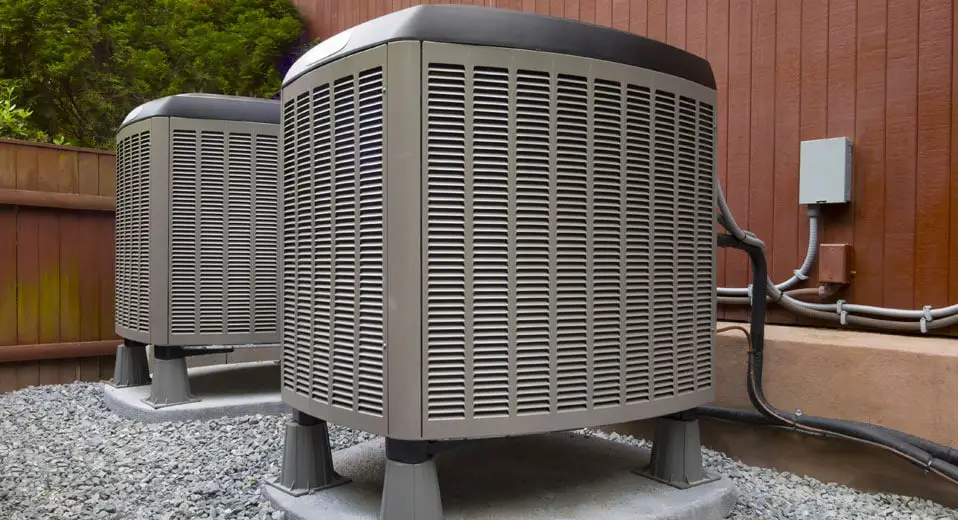
From the traditional single-stage heat pumps to the modern double-stage systems, HVAC systems manufacturers keep producing even more advanced appliances, such as the variable capacity heat pumps that are even more efficient.
This article pits single-stage heat pump efficiency against two-stage units to give you a better guide when shopping for a heat pump. You’ll also learn about variable capacity units and why they’re even more efficient.
TL;DR: Single-Stage vs Two-Stage Heat Pump

Single-Stage Heat Pump

Two-Stage Heat Pump

Pros
Single-Stage Heat Pump
Works efficiently when properly sized
Easy installation and replacement
Moderately priced, thus more suitable for households on a budget
Two-Stage Heat Pump
More energy-efficient
Runs longer and silently, dehumidifies a home more effectively, and offers even cooling
Offers two levels of control—high and low
Cons
Single-Stage Heat Pump
Designed to run at just one speed (100%)
Consumes a lot of energy(turns on and off more often), making them more costly to run
Offers less comfort and is noisy
Two-Stage Heat Pump
Expensive to repair
More complicated to fix
High upfront equipment cost
Best For
Single-Stage Heat Pump
Smaller households on a budget
Two-Stage Heat Pump
Comfort-oriented homes
What Is a Single-Stage Heat Pump and How Does It Work?
Single-stage heat pumps have been in use for a longer period than any modern heating unit. To date, most American homes still use single-stage heat pumps, which remain the standard AC units for decades now.
Just as the name suggests, single-stage heat pumps have one control. They blast your home with cold air when it’s hot and turn themselves off immediately after achieving the desired indoor temperature.
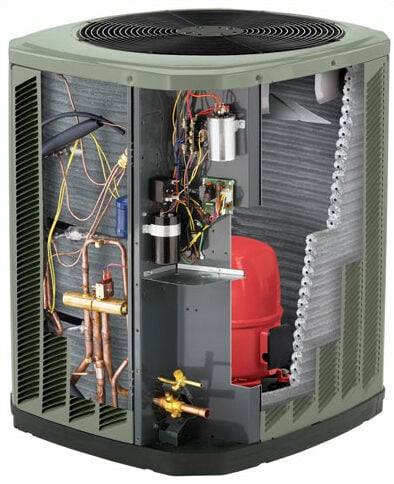
Single-stage units operate at 100% capacity. The units are either off or on without any middle ground.
They run to their full capacity and turn off until the room becomes hot again, creating an imbalance in your indoor cooling, thus more uncomfortable and uses much electricity.
For instance, when you set the thermostat to 70 degrees, the air conditioner will start running when the temperatures hit 71 degrees. When the temperatures get back to 70 degrees, the AC will go off.
However, single-stage heat pumps have the lowest equipment cost, are less likely to break, are easy to install but are less efficient, and use more electricity.
What Is a Two-Stage Heat Pump and How Does It Work?
A two-stage heat pump is an advanced model from single-stage units. Unlike single-stage, two-stage units have a variable-speed blower motor and two-stage valves, giving them more control over the output.
Such units will hardly experience a short cycle, thanks to the two-speed controls.
Two-stage heat pumps will run for much longer, emitting steady and clean air into the room. Although many new users tend to mistake the more extended run time for increased use in electricity, that’s always not the case since the unit adjusts according to the cooling demands.
Slow operation for long hours also means air passes in the unit more frequently. It thus ensures that more moisture is removed from the air leaving the room with highly dehumidified clean air.
Two-stage heat pumps have higher equipment costs and are a little expensive to install. However, the low electricity bills make these units worth the money.
They are more durable than the traditional units, and their fans produce little noise when running.
Most two-stage heat pumps also have average to higher HSPF and SEER ratings. That means these units are Energy Star approved, making them more reliable in energy consumption.
Overall, two-stage heat pumps offer more comfort and are energy efficient than their single-stage counterparts. The only downsides are high equipment and installation cost. They also tend to be more complicated to fix.
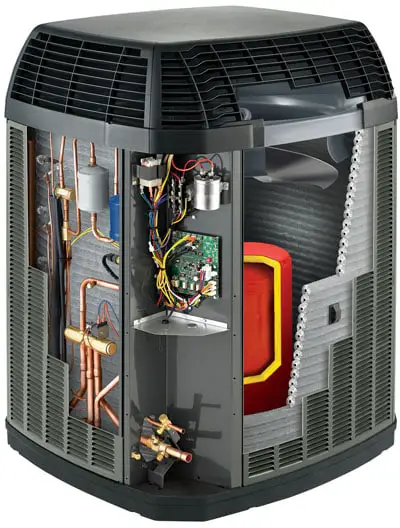
Relevant Characteristics Between a Single-Stage and Two-Stage Heat Pump
Single-Stage vs. Two-Stage Heat Pump
Compare by tapping or clicking below!

Cost
Single-Stage
$700 to $ 2,100
Two-Stage
$1,450 to $3,700
Noise Level
Single-Stage
72 to 76 decibels
Two-Stage
67 to 76 decibels
HSPF
Single-Stage
Low to an average rating
Two-Stage
Energy star level and higher
Energy Efficiency
Single-Stage
Low to moderate
Two-Stage
Moderate to excellent
Air Quality
Single-Stage
Low to average air quality
Two-Stage
High-quality air
Maintenance Requirement
Single-Stage
Low
Two-Stage
Low to moderate
Similarities and Differences
Your choice between a single-stage or two-stage heat pump all boils down to one ultimate goal—efficiency and thermal comfort. However, the two units have similarities and differences that will always determine how efficiently they operate.
Below are the similarities and differences between the two HVAC systems.
Single Stage and Two-Stage Heat Pump Differences
Energy Efficiency
A single-stage heat pump has one control and operates at a full capacity of 100 percent. Therefore, it performs at its optimum irrespective of the surrounding temperature, which leads to high energy consumption.
On the other hand, two-stage units run slower and will adjust according to the surrounding conditions.
Two-stage means it has two speeds and will run at low speed when the temperatures are moderate and high speed when the temperature shoots up, thus reducing energy consumption.
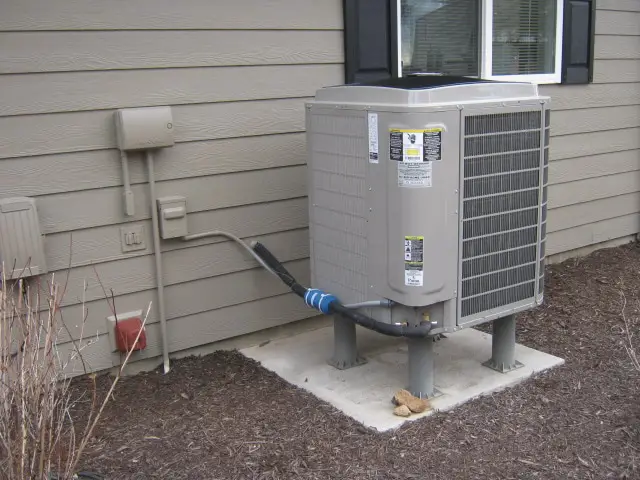
Comfort Level
Energy bills and comfort are the two most essential considerations in a heat pump. While single-stage units will give you some comfort level when properly sized, they can’t run for long thus will not maintain a steady balance of indoor humidity.
On the contrary, two-stage heat pumps have longer run times, which translates to even air distribution. Two-speed control also ensures that the heat pump adjusts accordingly to meet the cooling demands of a room.
Adjustable controls ensure the air is highly dehumidified, leaving you quality breathable air.
Equipment Cost and Maintenance
The overall performance of a heat pump mainly depends on the SEER and HSPF ratings. And while the higher is always the best in both cases, high SEER or HSPF heat pumps also cost more.
Generally, single-stage heat pumps have low to average SEER and HSPF ratings, making them less expensive than two-stage units with an average (Energy Star rating) of up to 16 SEER and above.
Besides, single-stage heat pump equipment is cheaper to maintain and with a low initial cost than two-stage units.
Single Stage and Two-Stage Heat Pump Similarities
Comfort Level
Overall, two-stage heat pumps offer more comfort than single-stage units, thanks to the long run time and two-speed control that makes it possible. However, a single-stage heat pump will offer equal cooling comfort as a two-stage system when adequately sized.
To achieve proper sizing, you may need special tools and decent knowledge about HVAC systems.
HSPF and SEER
HSPF or Heating Seasonal Performance Factor and SEER or Seasonal Energy Efficiency Ratio measure a heat pump’s efficiency.

Although single-stage heat pumps are considered more traditional, they still use SEER and HSPF ratings to gauge efficiency.
The same also applies to two-stage units. The higher the SEER and HSPF rating, the more efficient the heat pump will be, which applies to both units.
Efficiency Rating
Most single-stage heat pumps have SEER ratings starting from 13, which is the lowest. However, top models of single-stage units have SEER ratings of up to 15 or slightly more that qualify for Energy Star ratings.
Since most two-stage heat pumps are Energy Star approved and above, you’ll therefore find single-stage units with equal SEER ratings as two-stage heat pumps, thus the same energy efficiency ratings.
What Is HSPF?
HSPF or Heating Seasonal Performance Factor is a measure of heating efficiency in an HVAC system. It works similar to SEER, where a high HSPF rating equals better performance.

What About Variable-Capacity Heat Pumps?
Variable-capacity heat pumps are more advanced and come with the latest technology compared to single and double-stage systems. They run silently for longer hours and blow smooth and steady air into your home to maintain a comfortable indoor temperature.
The slow and continuous operation, usually below 100 percent, makes variable-capacity systems more efficient at dehumidifying a room. They can run as low as 25-30 percent, which responds better to indoor cooling needs.
Although variable systems are a little costly to acquire and install, the overall performance is far better than single and two-stage units. They save more on energy since they will adjust power relative to indoor and outdoor conditions.
The long run time makes variable capacity units more efficient at distributing even cooling in a room. You’ll hardly encounter some parts of your room that are colder or hotter than others.
Additionally, variable-capacity systems dispense quality air, making them suitable for light sleepers and hospital environments, thanks to their advanced temperature and humidity controls.
Most variable-capacity heat pumps are Energy Star approved with SEER ratings of 20-24 and above 26 for high-end models.

Factors to Consider When Choosing Between a Single-Stage or Two-Stage Heat Pump
Haven’t made up your mind yet? To further help you decide, here are some important factors to consider when choosing between a single-stage and two-stage heat pump.
Energy Efficiency Ratings: HSPF and SEER
Heat pumps have SEER that measures cooling efficiency and HSPF for measuring heating efficiency. In both cases, the higher the SEER or HSPF rating, the more efficient a heat pump will perform.
Most single-stage heat pumps have SEER ratings as low as 13 and HSPF starting from 7.7, which is the minimum, whereas two-stage heat pumps have an average SEER starting from about 16 onward and HSPF of 8.2 and above.
In either case, aim for the highest SEER or HSPF. However, keep in mind that the more efficient the unit is, the higher the initial cost.
Dehumidification
Single-stage heat pumps will blow air into a room and turn off immediately after achieving the desired levels. Two-stage heat pumps have two-speed controls that help the heat pump supply a steady cooling for a longer time.

Two-stage heat pumps are, therefore, far more efficient than a single stage.
However, you can achieve the same cooling efficiency with a single-stage heat pump, but you may need some decent knowledge or the services of an HVAC expert to do proper sizing of the unit and space to cool.
Specialized tools are involved, which may increase the cost further.
Noise Level
Single-stage heat pumps have noise levels of between 72 to 76 decibels, whereas two-stage units have slightly lower noise levels of 67 to 72 decibels.
Loud noise can be a nuisance for light sleepers or any environment where noise is a concern. That may include babies’ rooms or hospital environments. In such a case, a two-stage heat pump would be your best bet.
Otherwise, there’s not much difference in noise levels, which is why most people tend to overlook this factor.
Equipment Cost and Maintenance
Heat pumps vary significantly in price, including purchase cost, installation, maintenance, and running costs. Single-stage heat pumps have lower upfront costs, low installation, and maintenance but higher running costs due to high energy consumption.
On the other hand, two-stage heat pump equipment costs more, is a little expensive, and is complicated to install but consumes very little electricity.
So, you can either decide to spend more on the equipment and pay less in monthly energy bills or spend little on equipment and live with high monthly energy bills for the entire HVAC systems’ service life.
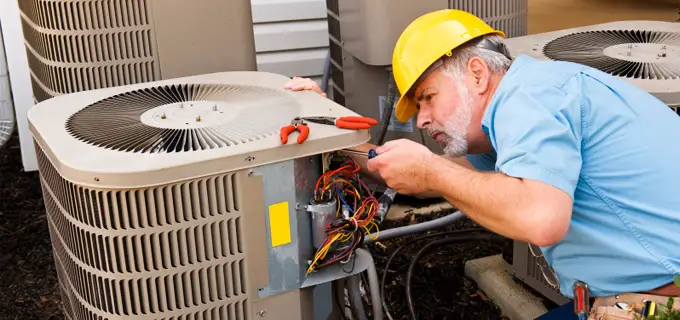
Bottom Line
While single-stage and two-stage heat pumps vary significantly in efficiency, installation, and replacement costs, each technology is still useful under specific conditions and user preferences.
A double-stage system offers significant comfort and saves you more on electric utility bills but is more expensive to acquire and install. On the other hand, a single-stage heat pump is moderately priced, easy to replace, and works well when properly sized.
The choice of a heat pump boils down to your budget, heating, and cooling needs.
People Also Ask
Many people still confuse the cooling efficiency among other operational features between the traditional single-stage heat pump and two-stage units. Below we answer common questions about the two units.
The compressor is one of the essential components of a heat pump. A two-stage compressor will last longer than a single stage. Besides, the two-stage heat pump has lower operating costs than the traditional heat pump.
The only downside is the upfront equipment cost, which is compensated in the reduced monthly electric utility bill, low maintenance cost, and better warranty protection. Overall, a two-stage heat pump is worth investing money in.
Two-stage heat pumps are more efficient, with a starting average SEER rating of 16—an Energy Star approved rating. Most brands have a SEER of 19, with tops models going up to 21 SEER rating.
Single-stage heat pumps are the least efficient and have a SEER rating starting from 13, which is the lowest. However, the latest single-stage heat pumps have a SEER rating of up to 18 for specific models.
